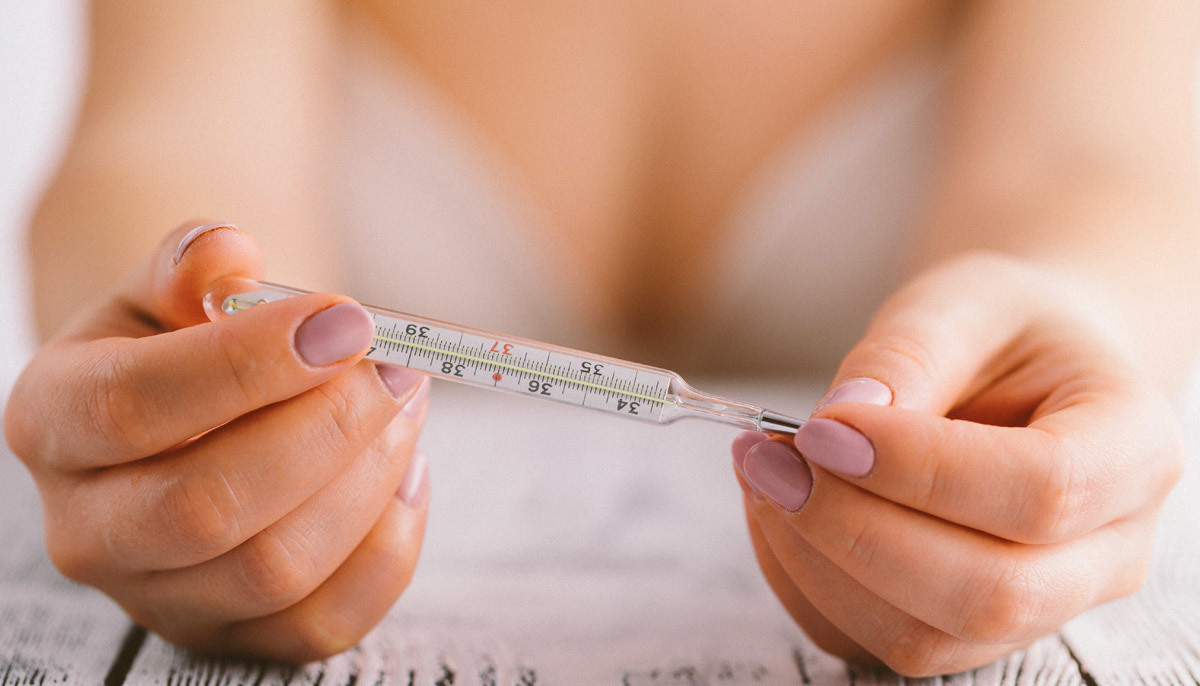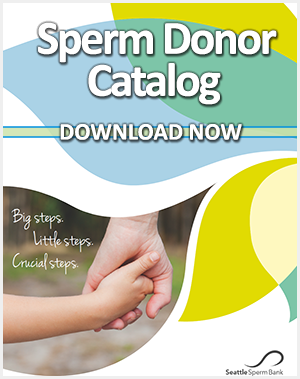Most of us don’t think about what our bodies are doing monthly. This changes a bit when we are trying to get pregnant. Why didn’t they go over our fertile window and what a luteal phase is in high school?
Considering we are in the middle of a global pandemic, and women are increasingly turning to options like home insemination, it is more important than ever to take the lead on our own health and fertility. To empower ourselves and better understand what is going on each month, let’s dive into our monthly cycle. It all starts on day one of your cycle.
Cycle Day 1
This is the start of your period, the cycle that typically lasts around 28 days. However, cycles are as unique as fingerprints. They can be shorter or longer or vary monthly depending on the person. We can break up the entire cycle into two phases: the follicular phase, which is before ovulation; and the luteal phase, or after ovulation. Follicular refers to the follicles that are developing in the ovaries, which contain an egg. And luteal refers to the development of a corpus luteum, which is a structure that develops in the ovary after ovulation. So, on Cycle Day 1, you are in the follicular phase and shedding your uterine lining.
Follicular Phase, Cycle Days 1-5
Physical activity: Menstruation, shedding your uterine lining, bloating, and the whole thing!
Hormonal activity: Your brain starts sending follicle stimulating hormone (FSH) and luteinizing hormone (LH) to your ovaries. Ovaries get busy making estrogen.
FSH tells your ovaries to make follicles, and in turn, cause a few eggs to mature. (All the eggs that someone will ever have are present at the time of birth, so new ones are not being made. They all just hang out in the ovaries and wait for the signal to mature.) Although there are multiple follicles growing, only one will grow to the full size and contain a mature egg. Sometimes a second egg can be released, which can lead to twins, but usually there is only one.
Cycle Days 6-12
Physical activity: Your period has stopped, and your uterine lining starts to thicken (although you can’t tell unless a doctor performs a specific test.)
Hormonal activity: Estrogen being produced by your ovaries tells your brain to stop making FSH. LH is still increasing.
After you have enough FSH to create a follicle with a nice mature egg, you body lets itself know, “Hey, good job, don’t waste these eggs” and shuts off the FSH production. LH is increasing and will be responsible for your ovulation and release of that beautiful egg. This is a time when ovulation predictor kits (OPKs) can be used to measure the increasing levels of LH. This can give you one indication that ovulation is fast approaching. LH will hit a peak level (again, unique to the individual, which is why OPKs do not work for every person) and will trigger ovulation in the next 24-48 hours.
Cycle Days 13-14
Physical activity: you may feel an increased sex drive and may notice some changes in your cervical mucous.
Hormonal activity: LH peaks and triggers ovulation. Estrogen is at a high for the month, which causes an increase in libido.
Inseminated sperm can survive for five days, so a few days leading up to ovulation is your fertile window. The egg will wait for fertilization for around 24 hours. Therefore, timing insemination (regardless of method) is critical. You want everyone to be at the party at the right time. You can use multiple tools to help find this right time. This include at-home OPKs and FSH kits along with tracking your temperature and checking your cervical mucous. You can also visit your healthcare partner (midwife, NP, or MD) to help get advanced testing if you find the at-home methods are not suitable.
Then, OVULATION! Yay! This starts the luteal phase.
Cycle Days 15-28
Physical activity: If fertilization was successful you may be someone who starts to feel early pregnancy symptoms at this time (around Cycle Day 24 or so). Be cautious when symptom spotting since early pregnancy symptoms are a lot like early period symptoms.
Hormonal activity: The corpus luteum is formed on the ovary where ovulation occurred — but only one ovary, not both. (Fun fact: Ovaries take turns each month ovulating, although that can vary person to person.) The corpus luteum produces estrogen and progesterone. These hormones will help get the uterus ready for implantation.
Awesome, you ovulated, now it’s the two-week wait. Why? Because once successful fertilization occurs, it takes some time for that developing embryo to make its way down the fallopian tube (fertilization happens right next to the ovary) and into the uterus, where it buries itself in the nice thick uterine lining, and starts producing human chorionic gonadotropin (hCG). Pregnancy tests are looking for hCG production to confirm a pregnancy. Some people start feeling early pregnancy symptoms eight days past ovulation and so may get faint positives. For the most part, symptoms and positive test results do not show up until 14 days past ovulation. Sensitive pregnancy tests can detect lower levels of hCG and can give results a few days before 14 days past ovulation.
And then back to Cycle Day 1 and it starts all over again.
So, either you are now getting your positive pregnancy test, or your period has started up again. You are shedding that lining that you have worked so hard all month for and starting fresh again. But give yourself a break, it can take multiple attempts to get pregnant (regardless of method). If you are over 35 and have been trying unsuccessfully for six months, or if you are under 35 and have been trying for a year, you should consider reaching out to a physician to take a look at other factors that may be affecting your chances.
Seattle Sperm Bank is here for you when you are ready to start your journey, so please reach out to us at any time with questions at cs@seattlespermbank.com or (206)588-1484.



